Abstract
The in vitro and in vivo antibacterial activities of carumonam (AMA-1080), a synthetic sulfazecin derivative, were compared with those of aztreonam, cefoperazone, ceftazidime, and cefsulodin. Carumonam was highly active in vitro against members of the family Enterobacteriaceae, Pseudomonas aeruginosa, and Haemophilus influenzae and weakly active against Streptococcus pneumoniae, but it was not active against Staphylococcus aureus. The MICs of carumonam for 90% of 1,156 clinical Enterobacteriaceae isolates were between 0.013 and 25 micrograms/ml, which were the lowest MICs of the antibiotics tested. The MIC of carumonam for 90% of Klebsiella oxytoca was 0.2 micrograms/ml, whereas that of aztreonam was 50 micrograms/ml. The superiority of carumonam to aztreonam and the reference cephalosporins was also demonstrated by their activities against Klebsiella pneumoniae and Enterobacter cloacae. The MIC of carumonam for 90% of P. aeruginosa was 12.5 micrograms/ml, which was comparable to the MICs of aztreonam and ceftazidime. Carumonam showed a high affinity for the penicillin-binding protein 3 of gram-negative bacteria, but not for the penicillin-binding proteins of S. aureus and Bacteroides fragilis. Carumonam was resistant to hydrolysis by 12 plasmid-mediated beta-lactamases and 7 chromosomal beta-lactamases. It was more stable than aztreonam to hydrolysis by the beta-lactamase of K. oxytoca; this stability is related to the superiority of the in vitro and in vivo activities of carumonam to those of aztreonam against this species. In general, the protective activities (50% effective dose) of carumonam and reference antibiotics in mice with experimental intraperitoneal infections correlated with the in vitro activities (MIC); carumonam showed excellent protective activity against most aerobic gram-negative bacteria.
Full text
PDF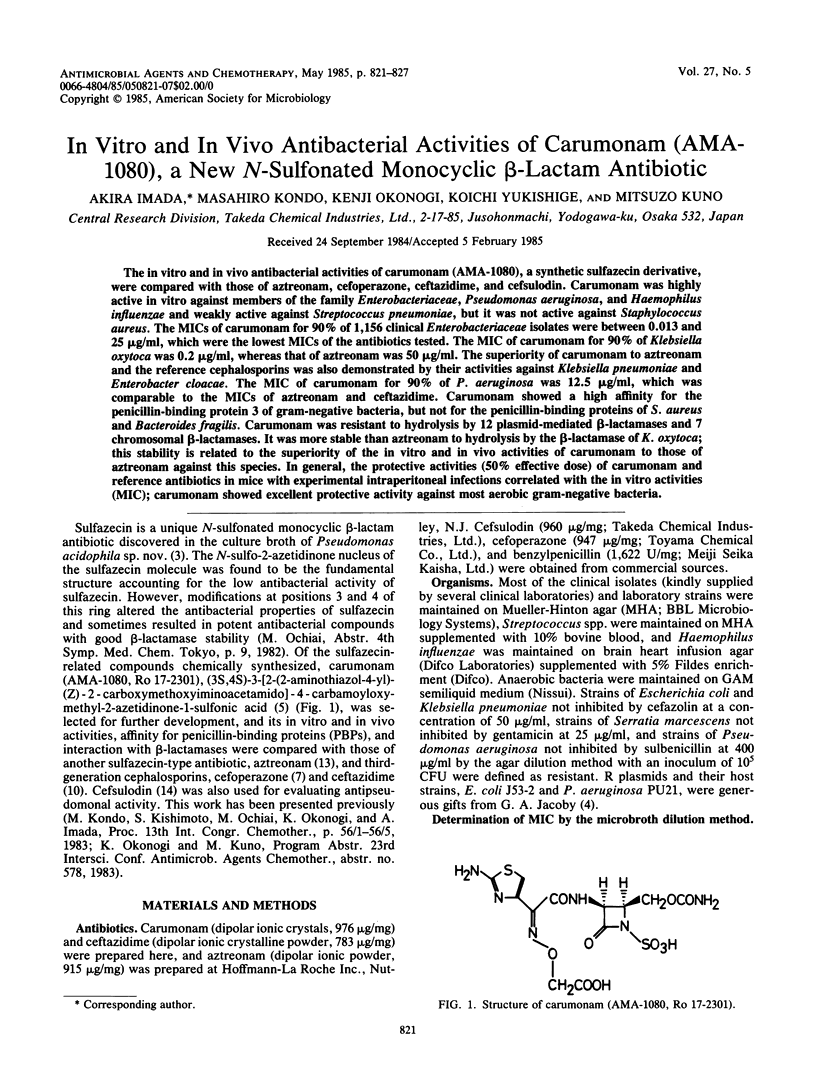
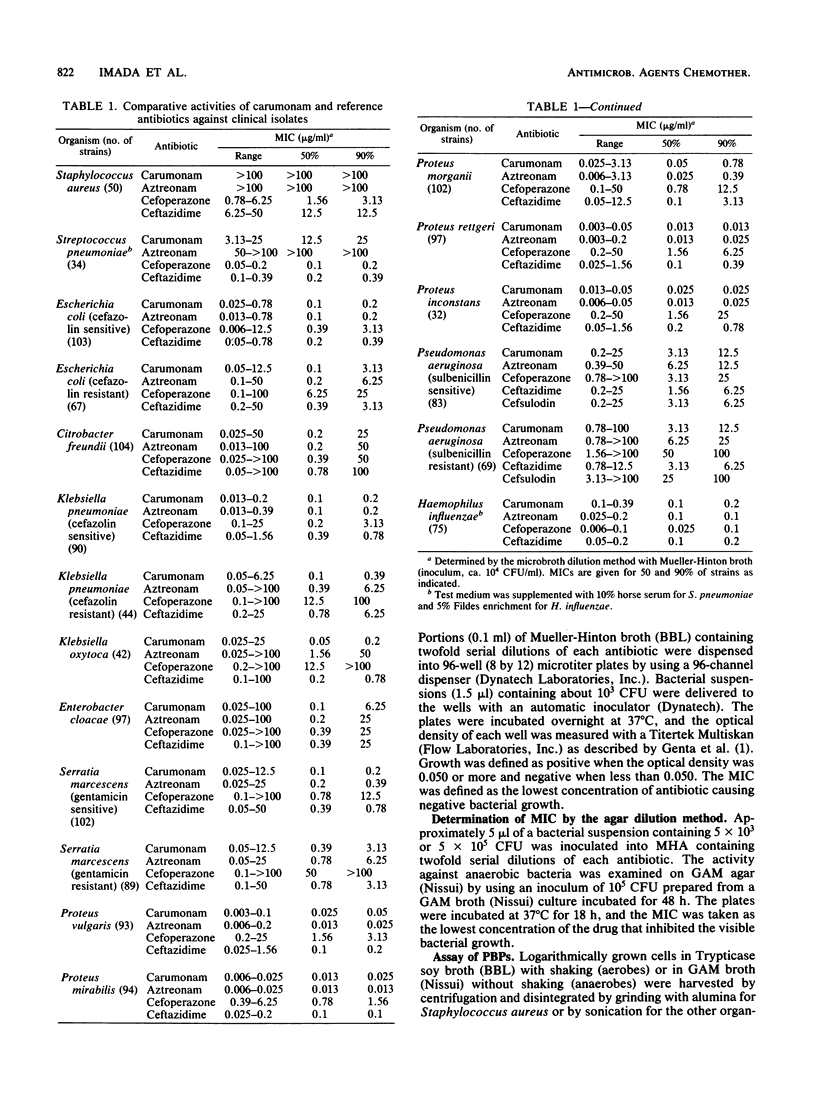
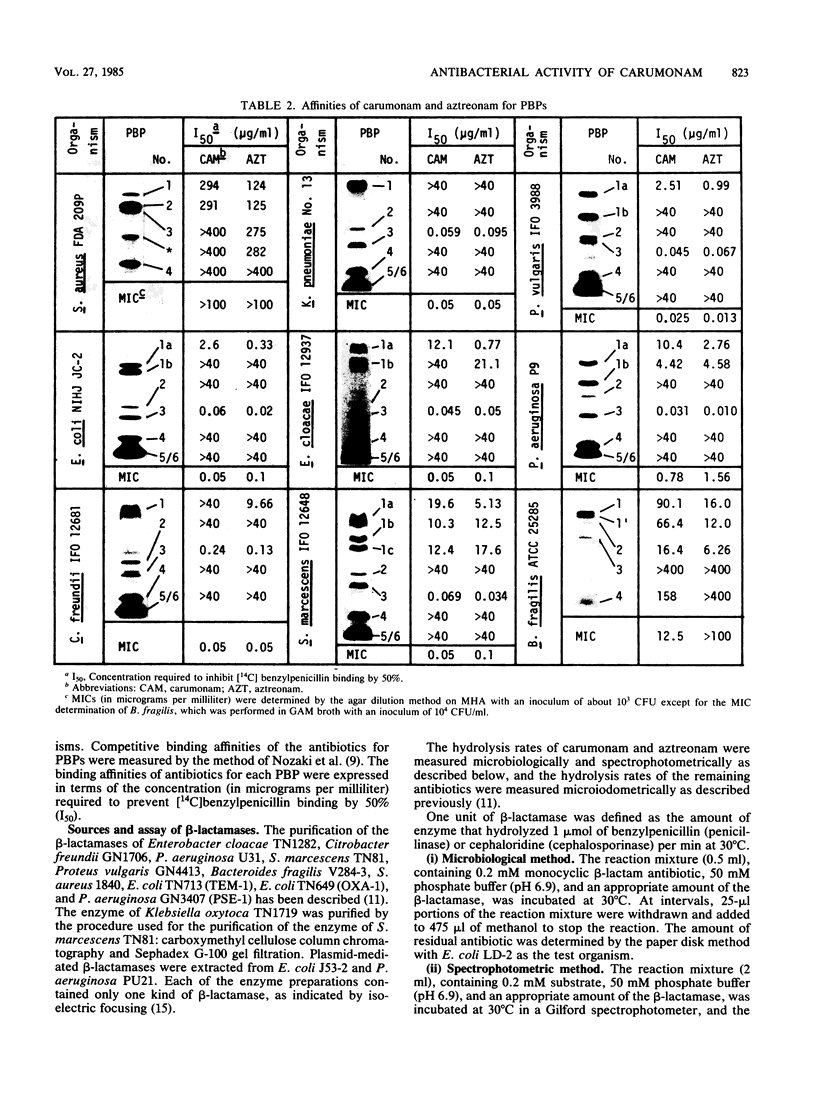
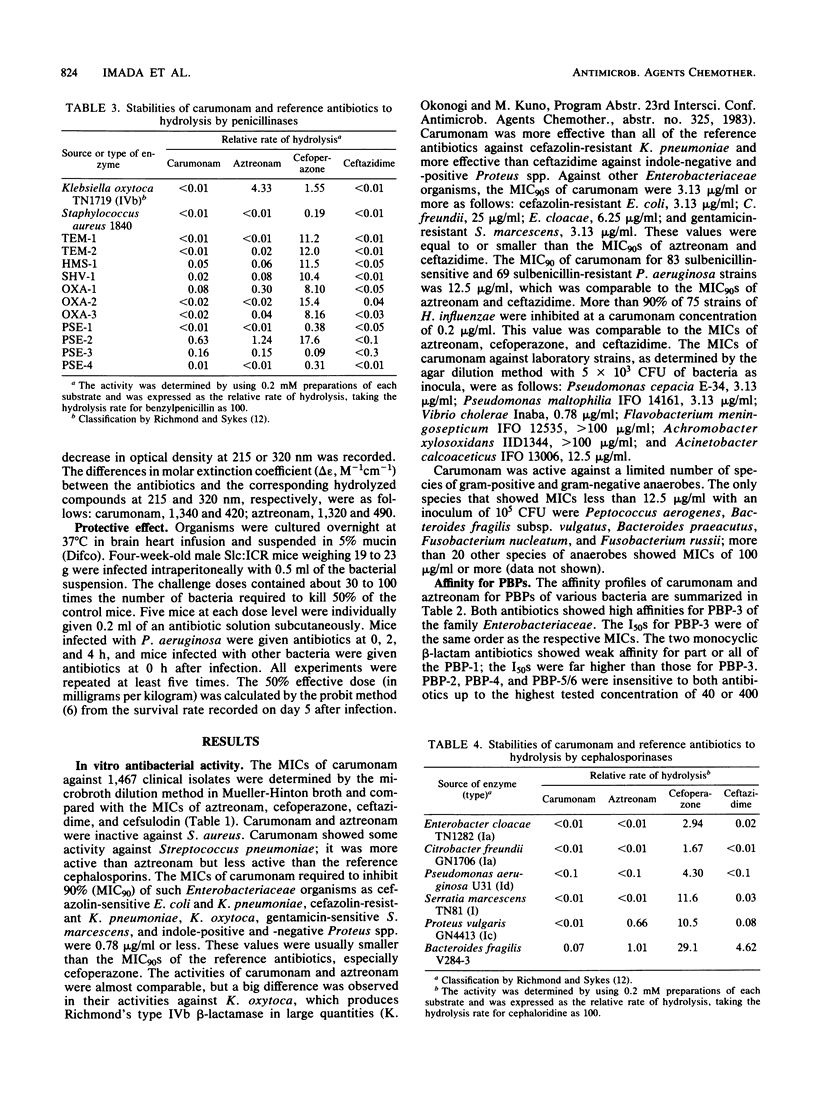
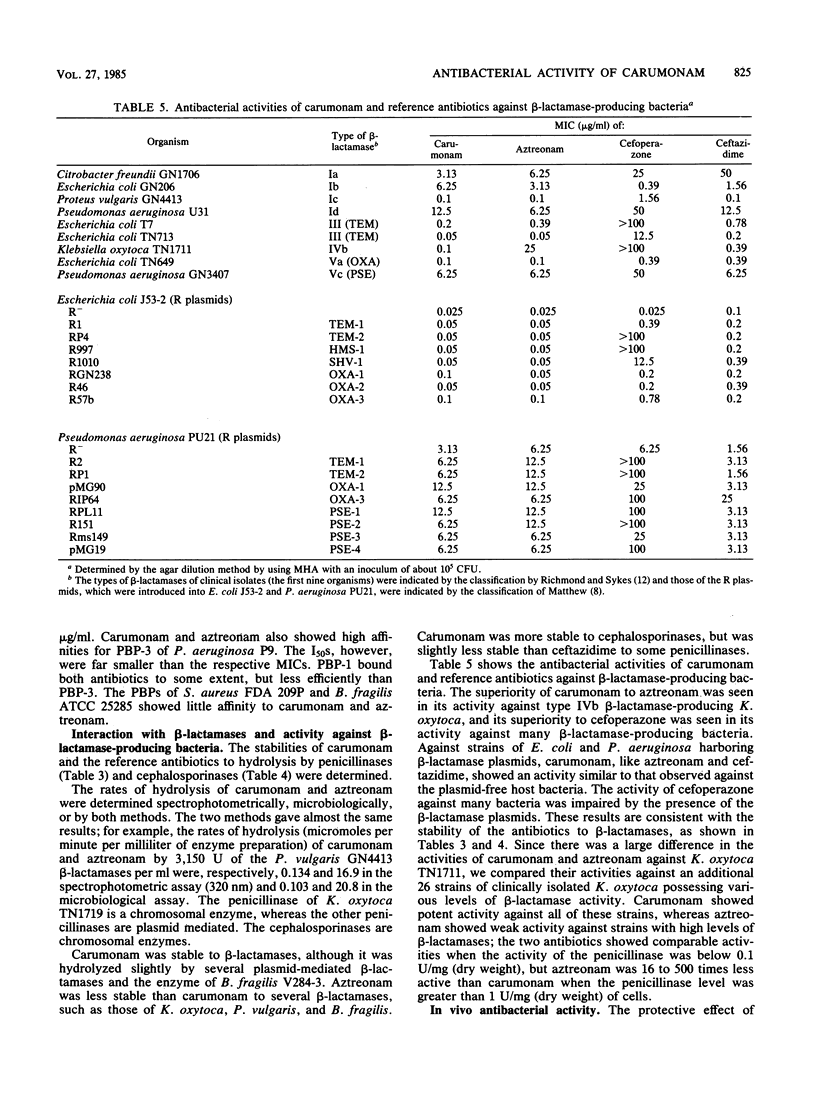
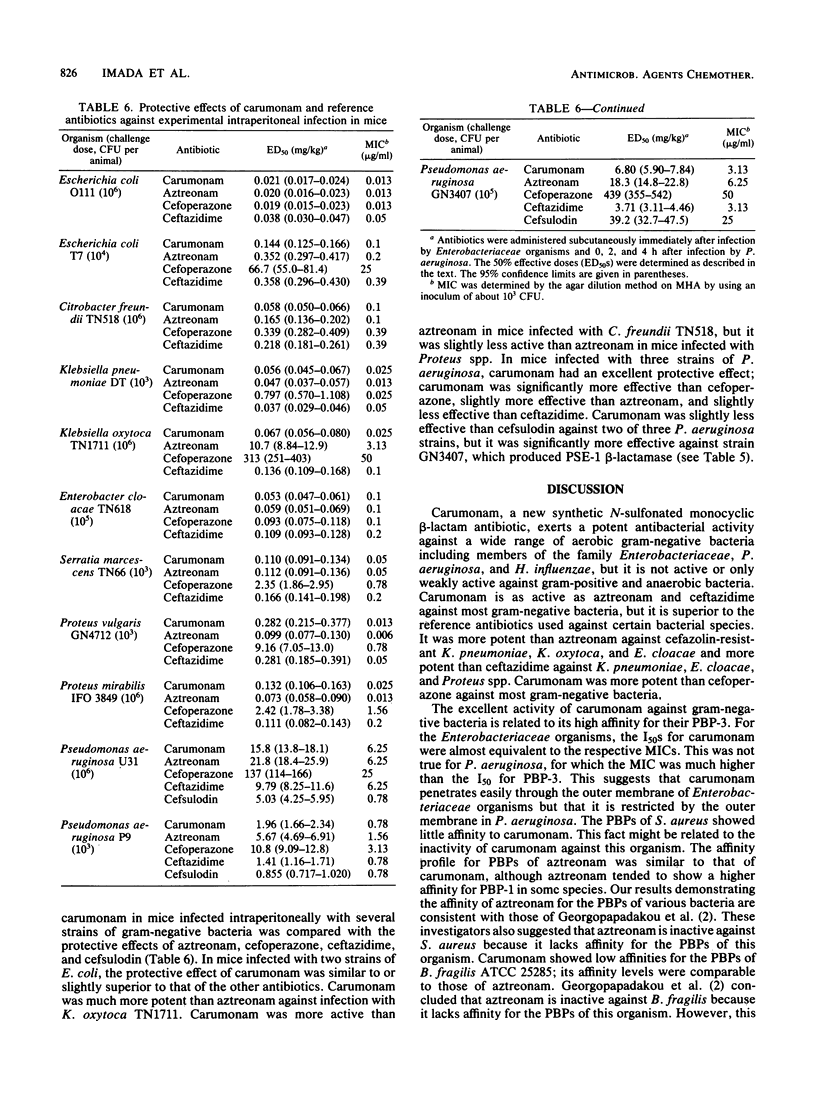
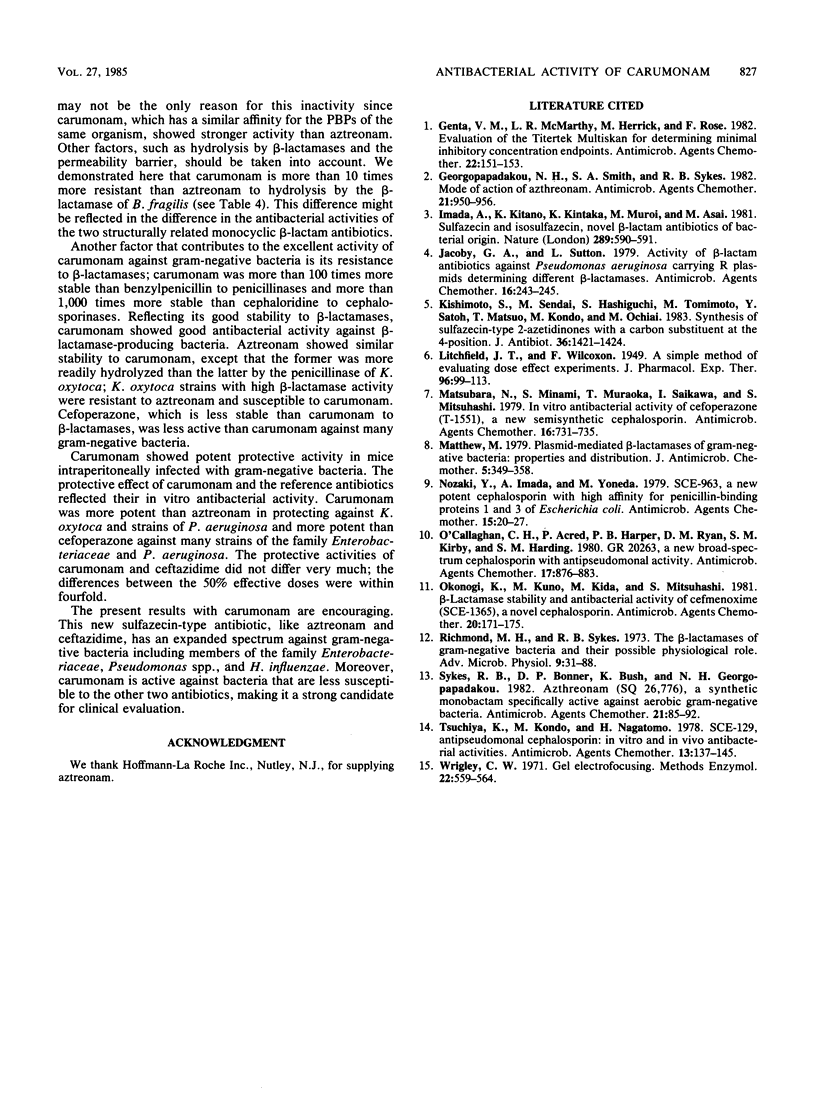
Images in this article
Selected References
These references are in PubMed. This may not be the complete list of references from this article.
- Genta V. M., McCarthy L. R., Herrick M., Rose F. Evaluation of the Titertek Multiskan for determining minimal inhibitory concentration endpoints. Antimicrob Agents Chemother. 1982 Jul;22(1):151–153. doi: 10.1128/aac.22.1.151. [DOI] [PMC free article] [PubMed] [Google Scholar]
- Georgopapadakou N. H., Smith S. A., Sykes R. B. Mode of action of azthreonam. Antimicrob Agents Chemother. 1982 Jun;21(6):950–956. doi: 10.1128/aac.21.6.950. [DOI] [PMC free article] [PubMed] [Google Scholar]
- Imada A., Kitano K., Kintaka K., Muroi M., Asai M. Sulfazecin and isosulfazecin, novel beta-lactam antibiotics of bacterial origin. Nature. 1981 Feb 12;289(5798):590–591. doi: 10.1038/289590a0. [DOI] [PubMed] [Google Scholar]
- Jacoby G. A., Sutton L. Activity of beta-lactam antibiotics against Pseudomonas aeruginosa carrying R plasmids determining different beta-lactamases. Antimicrob Agents Chemother. 1979 Aug;16(2):243–245. doi: 10.1128/aac.16.2.243. [DOI] [PMC free article] [PubMed] [Google Scholar]
- Kishimoto S., Sendai M., Hashiguchi S., Tomimoto M., Satoh Y., Matsuo T., Kondo M., Ochiai M. Synthesis of sulfazecin-type 2-azetidinones with a carbon substituent at the 4-position. J Antibiot (Tokyo) 1983 Oct;36(10):1421–1424. doi: 10.7164/antibiotics.36.1421. [DOI] [PubMed] [Google Scholar]
- Matsubara N., Minami S., Muraoka T., Saikawa I., Mitsuhashi S. In vitro antibacterial activity of cefoperazone (T-1551), a new semisynthetic cephalosporin. Antimicrob Agents Chemother. 1979 Dec;16(6):731–735. doi: 10.1128/aac.16.6.731. [DOI] [PMC free article] [PubMed] [Google Scholar]
- Matthew M. Plasmid-mediated beta-lactamases of Gram-negative bacteria: properties and distribution. J Antimicrob Chemother. 1979 Jul;5(4):349–358. doi: 10.1093/jac/5.4.349. [DOI] [PubMed] [Google Scholar]
- Nozaki Y., Imada A., Yoneda M. SCE-963, a new potent cephalosporin with high affinity for penicillin-binding proteins 1 and 3 of Escherichia coli. Antimicrob Agents Chemother. 1979 Jan;15(1):20–27. doi: 10.1128/aac.15.1.20. [DOI] [PMC free article] [PubMed] [Google Scholar]
- O'Callaghan C. H., Acred P., Harper P. B., Ryan D. M., Kirby S. M., Harding S. M. GR 20263, a new broad-spectrum cephalosporin with anti-pseudomonal activity. Antimicrob Agents Chemother. 1980 May;17(5):876–883. doi: 10.1128/aac.17.5.876. [DOI] [PMC free article] [PubMed] [Google Scholar]
- Okonogi K., Kuno M., Kida M., Mitsuhashi S. Beta-lactamase stability and antibacterial activity of cefmenoxime (SCE-1365), a novel cephalosporin. Antimicrob Agents Chemother. 1981 Aug;20(2):171–175. doi: 10.1128/aac.20.2.171. [DOI] [PMC free article] [PubMed] [Google Scholar]
- Richmond M. H., Sykes R. B. The beta-lactamases of gram-negative bacteria and their possible physiological role. Adv Microb Physiol. 1973;9:31–88. doi: 10.1016/s0065-2911(08)60376-8. [DOI] [PubMed] [Google Scholar]
- Sykes R. B., Bonner D. P., Bush K., Georgopapadakou N. H. Azthreonam (SQ 26,776), a synthetic monobactam specifically active against aerobic gram-negative bacteria. Antimicrob Agents Chemother. 1982 Jan;21(1):85–92. doi: 10.1128/aac.21.1.85. [DOI] [PMC free article] [PubMed] [Google Scholar]
- Tsuchiya K., Kondo M., Nagatomo H. SCE-129, antipseudomonal cephalosporin: in vitro and in vivo antibacterial activities. Antimicrob Agents Chemother. 1978 Feb;13(2):137–145. doi: 10.1128/aac.13.2.137. [DOI] [PMC free article] [PubMed] [Google Scholar]



